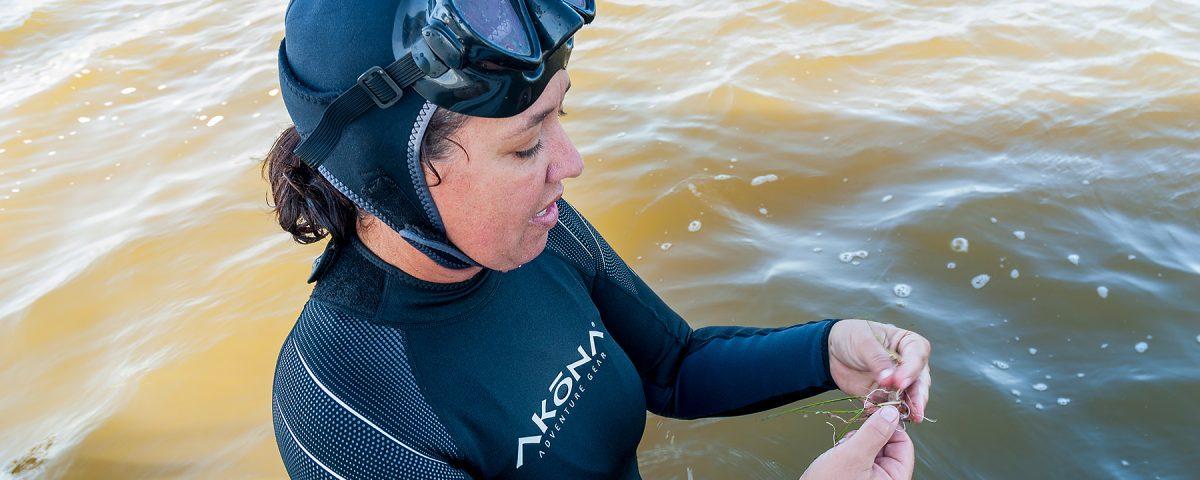Indian River Lagoon ecosystem shows progress amid ongoing restoration efforts


Lauren Hall, District Environmental Scientist, conducts seagrass monitoring in the Indian River Lagoon.
PALATKA, Fla., June 11, 2024 — The St. Johns River Water Management District is actively researching the dynamic changes in seagrass abundance within Florida’s Indian River Lagoon (IRL), a crucial estuary spanning 40 percent of the state’s eastern coastline. The IRL has long faced challenges stemming from compromised water quality and recurring harmful algal blooms, resulting in significant seagrass loss. Nonetheless, recent investigations reveal there is cause for hope, but also much more work to be done.
As part of its ongoing commitment to the health and restoration of the lagoon, the District monitors seagrass growth, conducting biannual visual assessments and official mapping every two years. Data collected in the summer of 2023 revealed an increase in seagrass extent since 2021, particularly in the northern IRL and southern Mosquito Lagoon. Additionally, in-water surveys conducted in January and February 2024 noted natural seagrass recruitment in the Banana River Lagoon and northern IRL.
Despite these positive signs, challenges persist. For example, the seagrass in the southern lagoon experienced a slight decline. District scientists are actively exploring the factors behind both the positive and negative trends. Notably, the shallower waters of the northern lagoon play a significant role, allowing light to reach seagrasses and stimulate growth. Additionally, this area appears to host a richer seed source, enhancing the natural recruitment observed in recent surveys.
The recent increase in seagrass can also be attributed to factors such as improved water clarity since 2021, the absence of major bloom events, and years of collaborative efforts implementing projects along the lagoon’s coast. However, the District emphasizes the need for continued vigilance and support to sustain any positive momentum.
Since 2019, Gov. DeSantis has committed nearly $390 million to enhance water quality in the region, including $100 million annually to fund projects dedicated to restoring the IRL. This infusion of state funding, combined with collaborative partnerships, is proving instrumental in revitalizing the lagoon.
By leveraging contributions from local, regional, and state partners, including the District, nearly 70 water quality improvement projects are in varying stages of progress along the lagoon. These projects encompass a diverse array of initiatives, ranging from the connection of septic tanks to central sewer systems to the enhancement of wastewater treatment facilities, thereby reducing the influx of harmful nutrients entering the waterway.
“While we acknowledge the gains in seagrass observed in recent surveys, it’s imperative to acknowledge the persistent challenges,” stated St. Johns River Water Management District Executive Director Mike Register. “Improvements in the IRL have been made possible with funding and support from Governor DeSantis, legislators, and local partners. The continued implementation of these types of projects is critical in addressing the lagoon’s issues.”
Residents are urged to contribute to the IRL’s preservation by adopting environmentally friendly practices, such as Florida-Friendly Landscaping™ principles. These include using native plants, water conservation, responsible fertilization, and reducing stormwater runoff.
For more information on restoration projects and ways to support the IRL’s recovery, please visit www.sjrwmd.com/static/waterways/IRL-projects-fact-sheet.pdf. Additional updates on the District’s efforts, including the latest seagrass data, can be found at www.sjrwmd.com/waterways/renew-lagoon.

